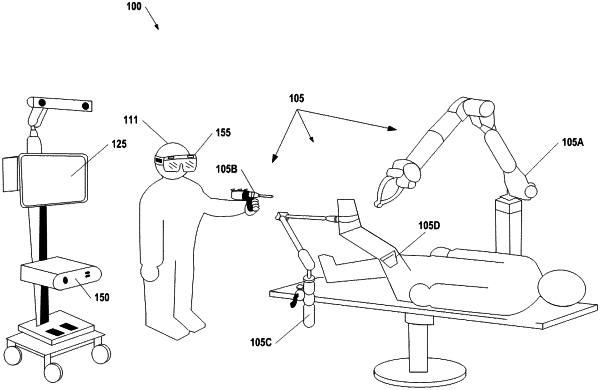| CPC A61B 34/10 (2016.02) [G16H 20/40 (2018.01); A61B 2034/102 (2016.02)] | 16 Claims |

|
1. A computer-implemented method for updating a surgical plan for placement of an implant in a joint of a patient, the method comprising:
obtaining the surgical plan, wherein the surgical plan comprises an implant model, an implant size, and an initial value for each of a plurality of placement parameters, wherein the plurality of placement parameters comprise one or more of femoral component medial-lateral position, femoral component anterior-posterior position, femoral component superior-inferior position, femoral component varus/valgus rotation, femoral component internal/external rotation, tibial component medial-lateral position, tibial component anterior-posterior position, tibial component superior inferior position, tibial component varus/valgus rotation, tibial component internal/external rotation, and tibial component slope;
receiving, from a user, selection of a single target condition selected from mid-flexion stability, anterior knee pain, implant longevity, and joint balance,
selecting, by a processor, one or more knee performance equations by accessing a computer-readable memory storing a library of knee performance equations, wherein the selecting is based on one or more of the implant model, the implant size, and patient demographic information, wherein each of the one or more knee performance equations yields an output response based on the plurality of placement parameters, wherein the output response affects the single target condition;
identifying a subset of placement parameters to which the output responses of the one or more knee performance equations are most sensitive from among the plurality of placement parameters, wherein the subset comprises at least one and no more than three placement parameters;
locking, by the processor, a value of each placement parameter excluded from the subset of placement parameters to which the output responses of the one or more knee performance equations are most sensitive at the corresponding initial value;
calculating, by the processor, for each of the one or more knee performance equations, the output response across a range of values for each of the subset of placement parameters based on the locked value for the placement parameters excluded from the subset, wherein each range of values includes the corresponding initial value;
displaying, on a display, a graphical representation of the output response for the single target condition across the range of values based on the selection;
receiving, from the user, a selected value from the range of values for each placement parameter of the subset;
updating the surgical plan based on the selected value for each placement parameter of the subset; and
robotically assisting, by the processor, a surgical tool to cut a bone according to the updated surgical plan, wherein robotically assisting a surgical tool comprises at least one of automatically navigating a guide associated with the surgical tool, providing tactile feedback to the surgical tool, automatically controlling a motor associated with the surgical tool, and actuating a robotic arm affixed to the surgical tool.
|